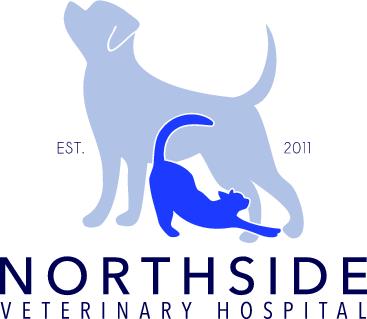Pet Femoral Head Osteotomy
A femoral head osteotomy (FHO) is also known as a femoral head ostectomy or Girdlestone’s operation. This surgical procedure involves removing the head and neck from the femur (thighbone).
Pet Femoral Head Osteotomy in Shawnee, OK
The surgery removes the “ball” section of the hip joint. Once the bones are removed, there is no contact between the bones that were causing pain due to disease or trauma. The procedure is a last resort to relieve pain and restore mobility to a diseased or injured hip pain that other treatments cannot alleviate.
Pet Femoral Head Osteotomy
FHO is performed to treat dogs with the following conditions:
- Dogs that cannot have a total hip replacement
- Broken or fractured femoral head
- Severe hip arthritis
- Legg Calve Perthes Disease (hip degeneration)
- Hip dislocation or luxation
- Joint laxity
- Hip dysplasia (a genetic condition)
When the femoral head and neck are removed, the surrounding muscles and scar tissues create a false joint (pseudoarthrosis). This transfers movement force to the pelvis rather than the leg itself. This improves comfort and improves mobility without pain before the surgery. You might notice the affected leg is slightly shorter than the others after surgery and have some degree of lameness. This, however, does not affect the dog’s life; most dogs live a close to normal life after the surgery. The surgery is simple, minimally invasive, affordable, with no implants, and typically involves removing the femoral head.
Hip Pain Signs in Dogs
There are several signs pinpointing hip pain in dogs, including:
- Decreased tolerance to physical activity or motivation to exercise or play
- Stiffness in joints
- Limping when walking
- “Bunny hopping”
Suitable Candidates for FHO
Active dogs have a better success rate in FHO surgery than inactive dogs. Dogs that are inactive have less muscle mass at the joint, making it more unstable after surgery which prolongs the recovery period. Active dogs build up muscle mass, enabling the dog to regain pain-free mobility faster than less active dogs.
FHO is suitable for small dogs under 45 pounds, especially those with a healthy weight. The false joint created during the FHO procedure benefits smaller dogs due to their weight than larger dogs. In some cases, the procedure may be performed on large dogs, depending on the resolved issue.
Diagnostics
Diagnostic imaging tests such as CT scans or X-rays help identify and determine the underlying cause of your dog’s hip joint pain. The tests also help the surgeon plan for hip surgery. FHO surgery depends on the severity of the condition.
What Happens During FHO Surgery
The surgery is performed under general anesthesia. During the surgery, the muscles around the hip will be retracted, and the hip joint will be opened. Once open, the femoral head is dislocated from its position and rotated to make reaching the femoral head and neck easier. The femoral head is sawed off, removing the ball and socket, leaving an empty socket. The leg muscles will keep the femur in place as a false joint gradually grows around the acetabulum, replacing the removed femur. The scar tissue cushions the femur against the acetabulum. Postoperative X-rays are taken to confirm the surgery’s success. FHO affordably restores pain-free mobility in dogs.
FHO Recovery
Every dog’s recovery process is different and is based on your dog’s overall health. Your dog might require to stay in the hospital for a few days for post-surgical care. During this period, your vet will prescribe pain medication such as non-steroidal anti-inflammatory (NSAID) drugs to relieve pain and inflammation at the surgical site.
The incisions are monitored for 10 to 14 days to check for any signs of discharge, redness, or inflammation. Strenuous physical activity, like running or jumping onto furniture, should be avoided for 30 days post-surgery. Short leash walks are recommended.
Post-Surgery Rehabilitation
The foot should not touch down for two weeks after surgery. Passive range of motion (PROM) can be performed if your dog is not in too much pain. PROM consists of moving the hip back and forward to help relax the muscles. The movements should not be vigorous to avoid stimulating pain. If you notice your dog is in pain, inform your vet so that the pain medication can be adjusted accordingly.
Exercise is important to prevent the false joint from forming too tightly and limiting the normal range of motion. Additionally, exercise strengthens the muscles and prevents atrophy (decrease in size) from lack of use. Some simple beneficial exercises include walking up the stairs or climbing up a hill, walking on water holding your pet up by his front legs, and walking them around on his hind legs. Encourage your dog to walk slowly to make bearing weight on the affected leg easier.
Following your vet’s post-operative care for your dog once you get home is important to avoid complications like infections. Recovery takes about six weeks but may be prolonged by other factors such as weight issues, arthritis, muscle atrophy, and scarring. If there are no signs of improvement, talk to your vet about a formal rehabilitation or rehabilitative program. Physical therapy promotes enhanced function and weight bearing.
Rehabilitative exercises include thrusting, controlled range of motion and weight-bearing exercises.
Despite a reduced range of motion and a shorter limb, most dogs fully recover from FHO surgery and regain normal function. FHO improves your dog’s quality of life.
For more information on femoral head osteotomy or to schedule an appointment, contact Northside Veterinary Hospital today.

